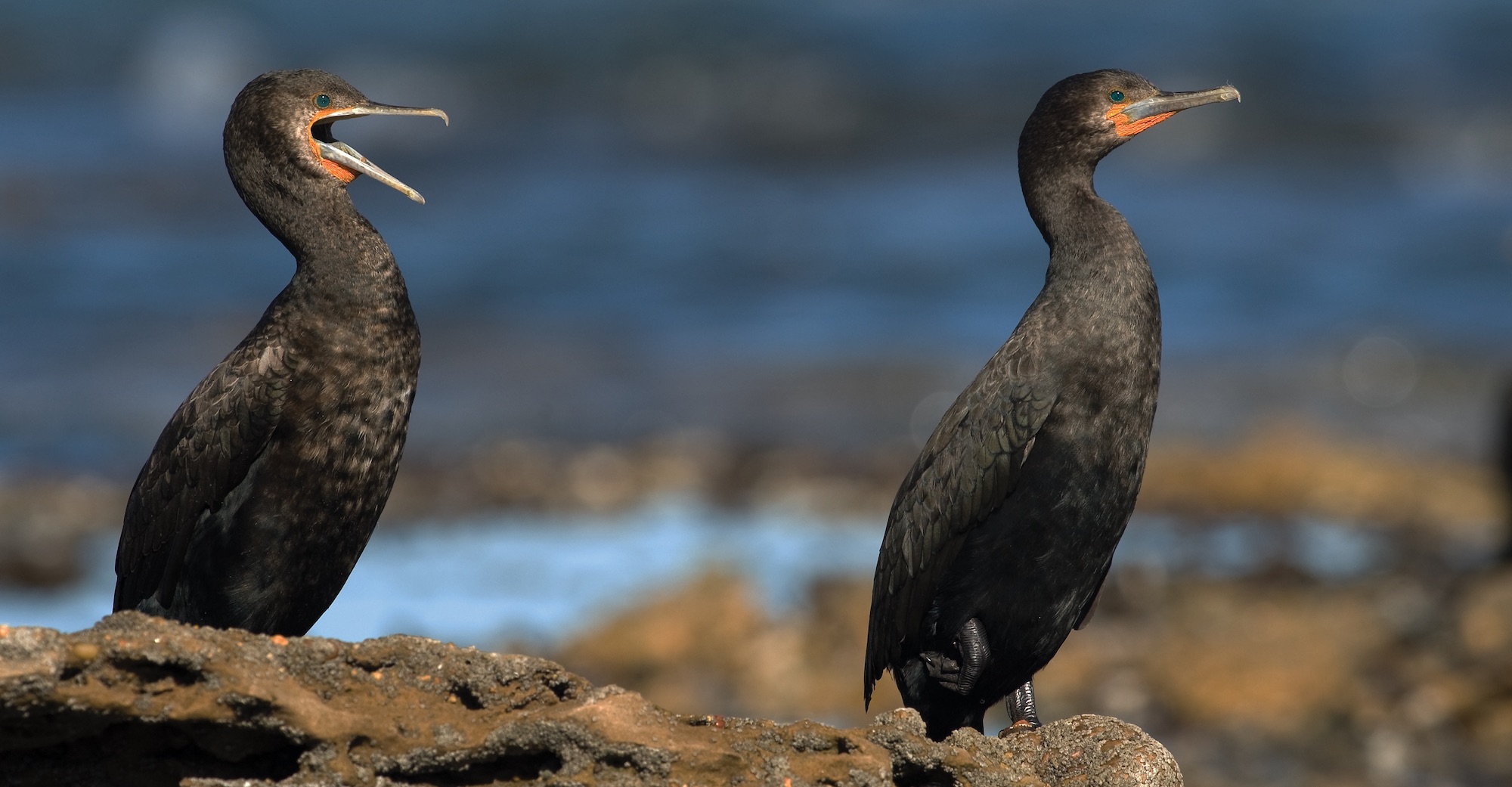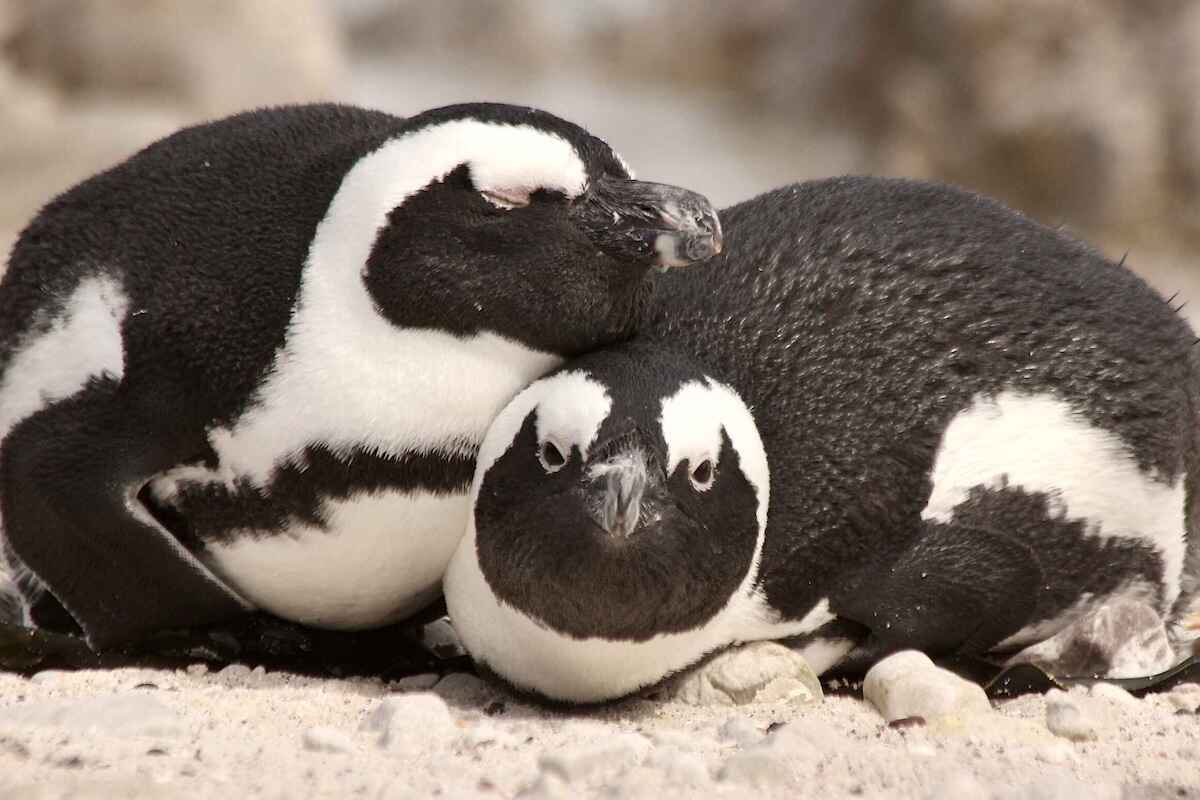
Angolan Island Paradise for Cape Cormorants
By Gail C. Potgieter
9th August 2019
Take a close look at the image above. Each black dot is a Cape Cormorant (see below) as seen from a light aircraft. Can you count the cormorants? This aerial view of a colony of Cape Cormorants is a composite of several of the thousands of images taken during a 2017 survey of Ilha dos Tigres, an island off the coast of Angola. The purpose of this survey was to document all visible animals using this island, so every dot counts!

Using Photoshop and other software, John Mendelsohn found a way to estimate the number of cormorants in these photos without having to count each dot, thus saving time and his eyesight. The final survey result was an eye-popping 250,786 birds, of which 16,038 were found on nests. A survey in 2005 estimated only 2,630 nesting birds at this site, although unlike the 2017 survey, it did not cover the entire island.
Despite numbering in the hundred thousands, the Cape Cormorant is listed as Endangered by the IUCN. With breeding colonies occurring only on the coastlines of Namibia, South Africa and Angola, the global Cape Cormorant population plummeted during the mid-1900s. Over-fishing of sardines and anchovies is thought to have precipitated the loss of over half the Cape Cormorant populations in Namibia and South Africa. This was exacerbated by guano mining activities at their breeding sites, which caused major disturbances and therefore reduced their breeding rates.
Much less is known about the Cape Cormorant population in Angola, which had always been thought to be peripheral to the main populations in Namibia and South Africa. The six-fold increase in nesting Cape Cormorants on Ilha dos Tigres and the nearby mainland of southern Angola has enormous significance for this species. Although one may be tempted to add these numbers to the current global population estimate, thus doubling it, John Mendelsohn suggests a more cautious interpretation of his study: “It is possible that these cormorants moved north from breeding sites off the coast of Namibia, rather than being an entirely new population.” To find out whether this is so, one would need to survey all the known breeding colonies in northern Namibia and southern Angola during the same breeding season.

Whether the cormorants moved or expanded north remains hard to know. But the major increase in cormorant numbers does suggest that this northern part of the Benguela Current now supports large stocks of fish. Could this be indicative of a much bigger change in the marine environment off the south-western coast of Africa?
Fascinating research questions aside, the Cape Cormorant still needs active conservation to reverse the global population decline. One thing that has helped the birds is the construction of guano platforms on Namibia’s coastline, which provide protected locations for breeding. Controlling disease outbreaks among the cormorant colonies will also save thousands of birds, as they are susceptible to avian cholera. However, the ultimate conservation action that will save not only Cape Cormorants but also many other fish-eating species is to ensure that fish stocks are allowed to recover from historical over-fishing. Enforcing sustainable fishing quotas in the coastal waters of Namibia, South Africa, and Angola are thus essential conservation interventions.
The researchers who found such surprising numbers of cormorants on Ilha dos Tigres saw thousands of other seabirds during their study and also counted over 15,000 Cape fur seals. “There are indications that the government of Angola wants to declare Ilha dos Tigres and the surrounding coastal waters a marine protected area,” says John Mendelsohn. “Our study confirms the importance of this area for marine conservation, and we fully support plans to protect this area.” This conservation initiative would ensure that the Cape Cormorants of Ilha dos Tigres can fish and breed in peace for years to come.
For articles on similar topics, please click one of the following options:
References:
1. Mendelsohn, J.M. and Haraes, L. (2018) “Aerial census of Cape Cormorants and Cape Fur Seals at Baía dos Tigres, Angola.” Namibian Journal of Environment 2 A:1-6.
https://www.nje.org.na/index.php/nje/article/view/volume2-mendelsohn
If you enjoyed this page, then you might also like:



For more great articles from Conservation Namibia see below...
Conservation Namibia brought to you by:
We use cookies to monitor site usage and to help improve it. See our Privacy Policy for details. By continuing to use the site, you acknowledge acceptance of our policy.








